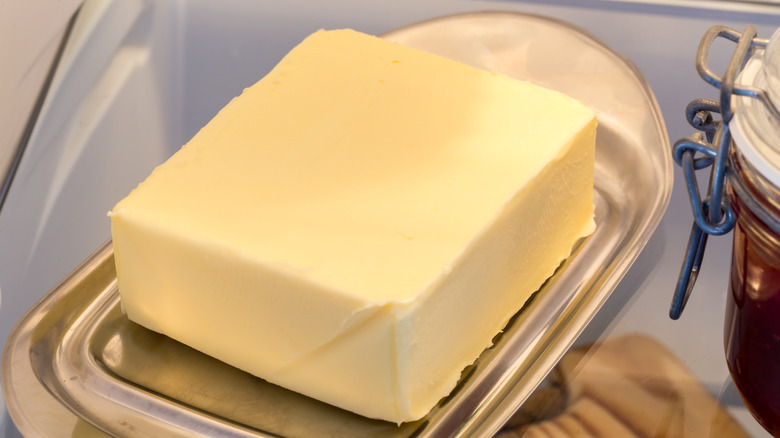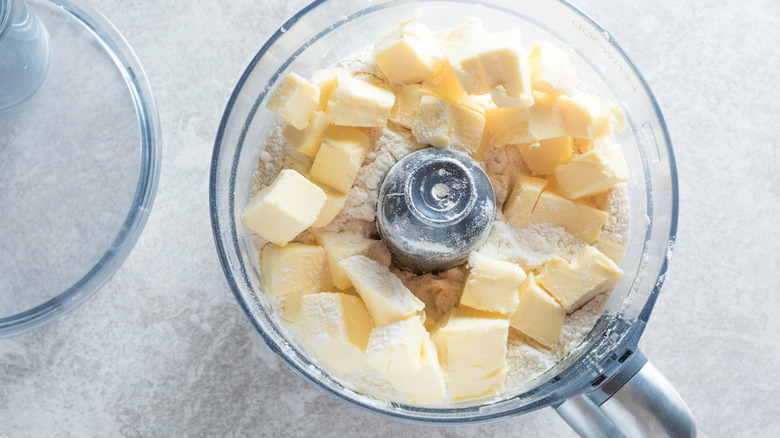Why You Shouldn't Beat Cold Butter With Your Mixer
We've always been told to take ingredients like butter and eggs to room temperature before baking with them, but what happens when we're pressed for time and we've forgotten to take the butter out of the fridge or freezer?
While desperation tells us it doesn't really matter what temperature butter is when it hits our mixers, science and pragmatism will tell us that it does, because while we are obligated to work with cold butter when we're making things like pastry, the same cannot be said for other types of baked goods, from cakes to cookies.
Cold butter, as many of us would know from experience, is rock solid. And, as Taste of Home points out, if we throw these cold blocks into a mixing bowl, there's a chance that we could end up ruining not just our recipes, but our favorite kitchen gadgets, too. It's not too difficult to imagine a bent and warped balloon whisk or beater after attempting to take a turn with a cold, hard brick. In fact, KitchenAid, itself, notes that if something hard were to fall into a stand mixer's bowl while mixing, it could end up damaging the mixer's motor.
There are ways to cut cold butter without a mixer
But even if you aren't too concerned about the fate of your kitchen appliances, cooking experts say there are other compelling reasons to give your butter time to get to room temperature — or more precisely, 65-67 degrees Fahrenheit, via Cook's Illustrated — before you cook with it.
The Cake Blog warns that cold butter is unable to make its way around flour proteins as effectively as room temperature butter might, and neither will it allow for air pockets to form, which is critical if your batter needs to be light and tender, per the Institute of Culinary Education. By virtue of its inflexibility, cold butter cannot do much for the emulsification process, and because it's cool, it won't help ingredients like sugar dissolve. After experimenting with different butter temperature points, The Cake Blog found cold butter can leave your cake's crumb coarse and heavy.
This is not to say that there isn't room for cold butter in your cooking repertoire, because that is exactly what is called for when you're making pie doughs, biscuits, and scones, per the Food Network. But if your recipe calls for cold butter, Land O'Lakes says you're better off using a pastry cutter, two butter knives, a fork, or a food processor, all of which are heavy-duty enough to cut cold butter down to the size needed to do the job.

